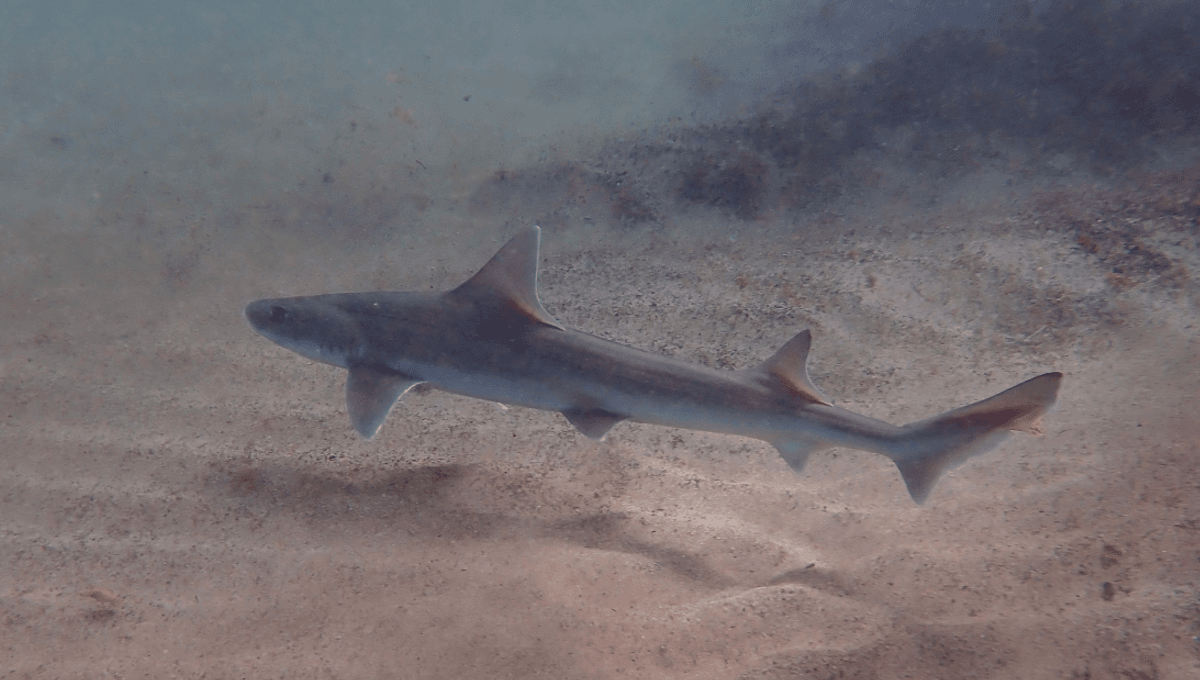
The smooth-hound shark (Mustelus mustelus) just proved that it can reproduce without sperm, producing multiple offspring with identical genes. It’s the first time recurrent parthenogenesis has been reported for the species, and broadens our knowledge of all the ways that exist in nature to cook up a baby solo.
Parthenogenesis is sometimes referred to as “virgin birth” because it involves producing offspring from an egg without needing any sperm. There was a suspected case of parthenogenesis in a tank of female smooth-hound sharks at an aquarium in Italy (video below), and now a new paper has found genetic evidence that they can reproduce without sperm.
It’s thought to be what’s known as facultative parthenogenesis, describing an animal that can reproduce sexually as well as asexually. The drivers for going solo can vary, but a dip in the male population is thought to be one, which is why cases of parthenogenesis often arise (and are most noticeable in) captive environments.
This new research took samples from captive sharks to examine their genetic markers, revealing that the juvenile M. mustelus tested were born through parthenogenesis. This was clear from the homozygosity seen at each genetic marker, which is consistent with an embryo developing from an egg – no male required.
It’s a version of parthenogenesis called automixis where the egg can merge with cells called polar bodies, which are leftovers from the egg production process. This generates offspring that are similar to the mother but not exact clones, and they’re generally all female.
Alternatively, parthenogenesis in plants can occur by apomixis, which involves reproductive cells duplicating their chromosomes via mitosis. In this case, offspring are genetically identical to their parent.
The study also revealed that parthenogenesis can occur annually in smooth-hound sharks, making it the first report of recurrent parthenogenesis. It also excluded the possibility that long-term sperm storage could explain where these babies were coming from, showing just how talented these female sharks are.
“This study represents the first genetically verified instances of parthenogenesis in Mustelus mustelus from 2020 onwards,” concluded the study authors. “These occurrences appear to recur annually, alternating between two adult female sharks, a phenomenon reported previously in the oviparous species Stegostoma tigrinum as a facultative response in the absence of a mate.”
Smooth-hound sharks now join a host of other critters who have shown that when the sperm count gets low, females can keep the population going all on their ones. To date, we’ve also seen parthenogenesis among California condors, Brazilian boas, zebra sharks, anacondas, and crocodiles – a finding that’s particularly eyebrow-raising and begs the question: could dinosaurs reproduce asexually? Bring on the archosaur clones.
The study is published in Scientific Reports.
Source Link: Smooth-Hound Shark Proves It Can Reproduce Solo – No Male Required